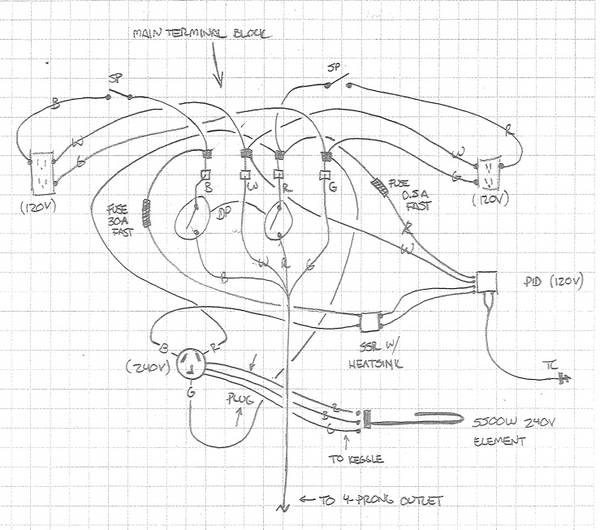All,
I am looking to convert to an electric setup on my keggle (use inside this winter). I do simple extract brewing now and might go towards all grain in the future. Right now, I just want to get a 5.5kw element and turn my keggle into an electric keggle.
I have been doing some reasearch and read through The Pol's thread on his build, but I still need some help.
If I want to just convert my keg to electric, what exactly do I need?
http://auberins.com/index.php?main_page=product_info&cPath=1&products_ id=3
http://auberins.com/index.php?main_page=product_info&cPath=2&products_ id=30
http://auberins.com/index.php?main_page=product_info&cPath=2&products_ id=77
and the heating element (JB Welded and all)
????
It would be useful to know schematically how this works out. Bring in power to the SSR, then to PID which is controlled by a thermocouple, ????
I am not 100% sure on this and still need more info...
What are the GFCI's for?
I am looking to convert to an electric setup on my keggle (use inside this winter). I do simple extract brewing now and might go towards all grain in the future. Right now, I just want to get a 5.5kw element and turn my keggle into an electric keggle.
I have been doing some reasearch and read through The Pol's thread on his build, but I still need some help.
If I want to just convert my keg to electric, what exactly do I need?
http://auberins.com/index.php?main_page=product_info&cPath=1&products_ id=3
http://auberins.com/index.php?main_page=product_info&cPath=2&products_ id=30
http://auberins.com/index.php?main_page=product_info&cPath=2&products_ id=77
and the heating element (JB Welded and all)
????
It would be useful to know schematically how this works out. Bring in power to the SSR, then to PID which is controlled by a thermocouple, ????
I am not 100% sure on this and still need more info...
What are the GFCI's for?




